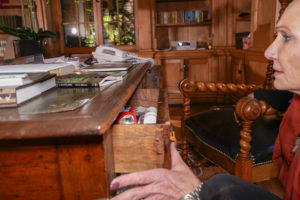 The adrenaline rush of a short-term disaster, such as the Thomas fire, is the kind of crisis we have trained for. But we haven’t trained for THIS Pandemic disaster. In a fire when we get the news to evacuate, we know what files to bring, our medicines, our dog things, our computer back-ups, and our Picassos. Since March 18th, we’ve participated in a long, grueling disaster for which we have no training.
The adrenaline rush of a short-term disaster, such as the Thomas fire, is the kind of crisis we have trained for. But we haven’t trained for THIS Pandemic disaster. In a fire when we get the news to evacuate, we know what files to bring, our medicines, our dog things, our computer back-ups, and our Picassos. Since March 18th, we’ve participated in a long, grueling disaster for which we have no training.
The fires taught us certain survival themes: the need to think fast, be organized, stay connected, to reach out to our friends, to have a group of folks with whom to stay for a while, and, in the case of a total loss, the temporal nature of personal belongings.
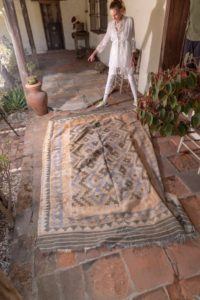 This eight-month excruciating pandemic crisis uncovered our need to grasp quite different survival methods, learned in agonizing slow motion. Here are the main themes of this prolonged disaster:
This eight-month excruciating pandemic crisis uncovered our need to grasp quite different survival methods, learned in agonizing slow motion. Here are the main themes of this prolonged disaster:
- Adaptability to a home-centered focus, both for work and for seclusion
- Adaptation of our home environments to our new realities
- Big changes in how we use space at home, and what is important for that space
- A big change in the concept of the comfort of material possessions. As opposed to a loss from fire, this present LOSS is a loss of belonging.
The closest parallel to belonging to an extended family or group is the symbol of our connections, material OBJECTS. That’s why we call personal possession of merit “belongings.”
You may ask, “what evidence does Elizabeth Stewart have, that as a society, we have a newfound respect for belongings that link us to our past and create a sense of personhood?”
An interesting etymological fact: the other word for belongings, personalty, is an old legal term for movable possessions.
We developed a new respect for home and things of the home.
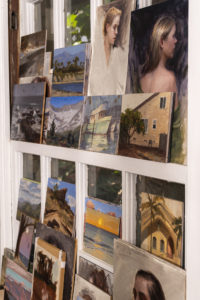 We observe this both as a concept and a reality in the market. Home prices, reflecting the high volume of home sales, increased eight percent across California in just this past month. My realtor friends can’t catch a breath. I just purchased a cabin in the mountains! Auction sales of art and decorative objects for the home have increased, specifically in the “affordable” arena, art priced up to $10k. Local platforms such as Craigslist show an increased volume of home furnishings offered for sale. On the streets of Santa Barbara we see objects emerging from homes with “FREE” signs posted upon them.
We observe this both as a concept and a reality in the market. Home prices, reflecting the high volume of home sales, increased eight percent across California in just this past month. My realtor friends can’t catch a breath. I just purchased a cabin in the mountains! Auction sales of art and decorative objects for the home have increased, specifically in the “affordable” arena, art priced up to $10k. Local platforms such as Craigslist show an increased volume of home furnishings offered for sale. On the streets of Santa Barbara we see objects emerging from homes with “FREE” signs posted upon them.
My client ask about downsizing or selling, as people angle for home office space. Fine art sales of “multiples,” meaning contemporary prints and fine art photography, are booming. People grew tired of the art on their walls. My clients also became newly concerned about objects they wish to pass on. Each one of us knows someone who died of COVID-19, and the urge to curate family treasures intensified in the light of looming mortality. All my estate and trust attorney friends are swamped with work and call me with questions about art and antique collections of value. To give you some guidelines from a material culture point of view, as a career stuff expert, I divided this article into themes in six sections:
- What is a collection of objects?
- What should be FREE stuff? and what about donations these days?
- What are the specific heirship issues to consider in curating possessions?
- What stuff qualifies for pricey storage?
- What are the great objects in your home, and how to insure them?
- What are the unknown objects of value – and what those objects that ubiquitous, and what to do with them when they clog up space?
Each portion of this discussion will address fair market valuations, insurance valuations and methods, and sales and donation options. Each of the six sections of this discussion is illustrated by a images shot from my various Santa Barbara appraisal work lately.
COLLECTIONS
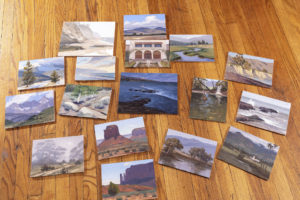 A collection is a group of similar objects joined by a theme. The more sophisticated the collector, the more similar each object becomes. Let’s say you collect quartz Victorian jewelry. An assortment of such things in the hand of a great collector is now Victorian jewelry set with ancient Roman quartz carved intaglio stones. Why does this definition matter? One, when you insure a collection, the loss of one object may often occasion a reimbursement for the TOTAL value of the WHOLE collection. Two, If you donate a collection, in the eyes of the IRS, which may grant you a tax deduction, a collection is a group of VERY VERY similar objects.
A collection is a group of similar objects joined by a theme. The more sophisticated the collector, the more similar each object becomes. Let’s say you collect quartz Victorian jewelry. An assortment of such things in the hand of a great collector is now Victorian jewelry set with ancient Roman quartz carved intaglio stones. Why does this definition matter? One, when you insure a collection, the loss of one object may often occasion a reimbursement for the TOTAL value of the WHOLE collection. Two, If you donate a collection, in the eyes of the IRS, which may grant you a tax deduction, a collection is a group of VERY VERY similar objects.
In other words, old clothes, called “vintage clothing” on the IRS donation form 8283, is not a collection. A bone fide collection of vintage clothes sounds like this on that 8283 form: “A collection of 1950’s men’s shirt-jacks by Van Heusen, a total of 25.” Then you can ‘take’ the collection deduction, which is greater than the sum of its parts.
A teacup collection, therefore, is not a collection.
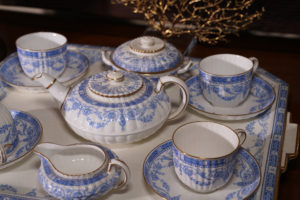 A bona fide teacup collection sounds like, for both insurance and donation purposes: “A collection of early 19th century creamware teacups and saucers, specifically American creamware, made by East Coast factories, for the growing American tea trade.” The concept of insuring a collection springs from the general premise: if you own a china service, and the tureen is broken, and cannot be replaced, the whole set becomes a total loss. Not all china services, in this case, are considered a total loss, but those of significant age or rarity ARE. I can’t find you, for example, an 18th century Meissen tureen to match your pattern. But I CAN find you a 20th century 1950’s Stanglware tureen to match your pattern. Succinctly put, a collection is unified, composed of rare items, and the work of a curating connoisseur.
A bona fide teacup collection sounds like, for both insurance and donation purposes: “A collection of early 19th century creamware teacups and saucers, specifically American creamware, made by East Coast factories, for the growing American tea trade.” The concept of insuring a collection springs from the general premise: if you own a china service, and the tureen is broken, and cannot be replaced, the whole set becomes a total loss. Not all china services, in this case, are considered a total loss, but those of significant age or rarity ARE. I can’t find you, for example, an 18th century Meissen tureen to match your pattern. But I CAN find you a 20th century 1950’s Stanglware tureen to match your pattern. Succinctly put, a collection is unified, composed of rare items, and the work of a curating connoisseur.
 The IRS allows tax deductions for objects, OR collections of objects, that fall into certain value points. Under $500, no appraisal is necessary, for $2-5k of claimed value, they suggest an appraisal. Over $5k an appraisal is necessary in the eyes of the IRS, and over $20k they require a fully researched, lavishly illustrated appraisal. “Appraisal” assumes the work is done by a certified appraiser. So the definition of a collection matters. A client of mine, in an effort to claim a $5k deduction, called his mom’s crummy furniture “a collection,” and the IRS denied it as a collection.
The IRS allows tax deductions for objects, OR collections of objects, that fall into certain value points. Under $500, no appraisal is necessary, for $2-5k of claimed value, they suggest an appraisal. Over $5k an appraisal is necessary in the eyes of the IRS, and over $20k they require a fully researched, lavishly illustrated appraisal. “Appraisal” assumes the work is done by a certified appraiser. So the definition of a collection matters. A client of mine, in an effort to claim a $5k deduction, called his mom’s crummy furniture “a collection,” and the IRS denied it as a collection.
FREE STUFF AND THE CHANGING PLATFORM FOR DONATIONS
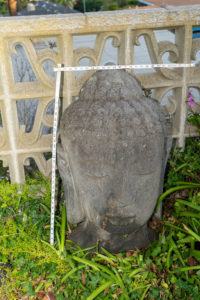 Included in this article you see real photos of FREE STUFF shot by my partner John Flandrick upon the pandemic streets of Santa Barbara in the last months. These images indicate two things. One, people are house-bound and bored, and, people don’t know what to do with unwanted objects. Two, this urge to give also indicates, in some cases, people care about their neighbors.
Included in this article you see real photos of FREE STUFF shot by my partner John Flandrick upon the pandemic streets of Santa Barbara in the last months. These images indicate two things. One, people are house-bound and bored, and, people don’t know what to do with unwanted objects. Two, this urge to give also indicates, in some cases, people care about their neighbors.
If you don’t like the idea of setting good things on the street, you can donate. But not all thrift stores accept donations, and won’t give you a statement of consummated selling price, necessary if you want to claim a tax deduction.
 I recommend two local thrift stores, both of which have trucks, and who keep good records of sales: Destined for Grace, and Unity Shoppe. Destined for Grace will send you a statement of what a significant object sold for, the definition of fair market value. Unity Shoppe will ask you to call me for a hypothetical fair market value before you donate. Both realized prices paid, and hypothetical prices projected are allowed for a tax deduction. By the way, if you put an object on the street, it will disappear in hours—a mystifying fact, as most of us want to clear away space, not add to it. However, I myself am a sucker for free stuff and have commandeered lately a free Victorian baby stroller on E. Pedregosa!
I recommend two local thrift stores, both of which have trucks, and who keep good records of sales: Destined for Grace, and Unity Shoppe. Destined for Grace will send you a statement of what a significant object sold for, the definition of fair market value. Unity Shoppe will ask you to call me for a hypothetical fair market value before you donate. Both realized prices paid, and hypothetical prices projected are allowed for a tax deduction. By the way, if you put an object on the street, it will disappear in hours—a mystifying fact, as most of us want to clear away space, not add to it. However, I myself am a sucker for free stuff and have commandeered lately a free Victorian baby stroller on E. Pedregosa!
HEIRSHIP OBJECTS
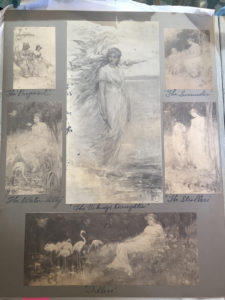 I know a mother who died of COVID-19 without letting anyone know the location of her trust and will. The kids have no idea what exists in her safe deposit box. Her third husband has no need of her first or second (even) marriage photos, or former children’s letters, or any other memory this mother might have had of her life in the distant past. Those objects died with her because no one curated her memories. If you face mortality, you now have a strong reason to believe you won’t live forever, so make time now to take two easy steps to curate your memories:
I know a mother who died of COVID-19 without letting anyone know the location of her trust and will. The kids have no idea what exists in her safe deposit box. Her third husband has no need of her first or second (even) marriage photos, or former children’s letters, or any other memory this mother might have had of her life in the distant past. Those objects died with her because no one curated her memories. If you face mortality, you now have a strong reason to believe you won’t live forever, so make time now to take two easy steps to curate your memories:
- Grab your smart phone and tour your home. Speak about the provenance of important family objects on a video. Store the video off your phone and make copies for your kids and lawyer.
- Take still photos of the SAME objects you have videoed and put these in a file on your computer with notes of provenance.
Why shoot both a video and still photos?
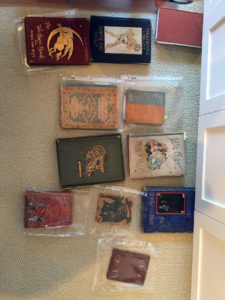 Because your kids and heirs get a fuller picture of what you have. Plus if you cover these items under your homeowner’s policy or a scheduled rider, in the case of a loss you will have the images to prove BOTH ownership AND location. Photos prove ownership. The video provides the location so get yourself in the shots.
Because your kids and heirs get a fuller picture of what you have. Plus if you cover these items under your homeowner’s policy or a scheduled rider, in the case of a loss you will have the images to prove BOTH ownership AND location. Photos prove ownership. The video provides the location so get yourself in the shots.
For objects such as photos, albums, family ephemera, SCAN them. Our friends lost family photos in the last three Santa Barbara fires. Think ahead: I took photos of all my family pictures located in my storage unit and sent those all to my son in a few computer files. You can do this now because you MIGHT have the time.
For large objects, such as paintings and furniture that can bear a real label, type out an object description, its provenance, and what you think it’s worth. Affix this label to the back. If you want, you can include the NAME to whom it should be gifted on the label.
For large estates of heirship related objects, hire me to write you an appraisal for equitable distribution. I specify the value of each object and make a balance sheet of equal distribution for the heirs. Make time now to speak to your trust attorney about the most valuable objects in your estate, as if you died without understand the tax implications and planning for them. A million dollar painting might be a liability for an heir, regarding capital gains.
STORAGE-WORTHY OBJECTS, (and those that are not worth the annual cost of storage)
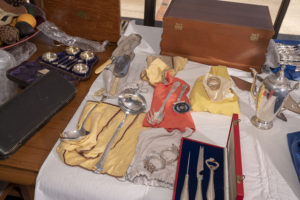 I bet you didn’t know the California eviction moratorium extends to storage locker rental fees, through May 2021. And prices for storage units have increased eight and a half percent over last year across the state. This indicates the importance of material objects in this pandemic. So, what do you store?
I bet you didn’t know the California eviction moratorium extends to storage locker rental fees, through May 2021. And prices for storage units have increased eight and a half percent over last year across the state. This indicates the importance of material objects in this pandemic. So, what do you store?
What you cannot replace you store, and by the way, you can replace BAD art. I know because I own a storage locker full of thrift store art. You cannot replace good art, your family memories, your son’s pottery from grade school, your paper business records for the last seven years…get the picture. Seventy-five percent of the contents of my storage locker I can replace. But now that I purchased a second home on Lake Arrowhead, I’m happy to see my “old friends” appear again in the form of material possessions form the past, in my new home. I paid a lot of money, $30k over ten years, for the privilege to do so, and I could’ve purchased those “old friends” three times over.
One important factor in storing valuable art and antiques: don’t store rugs, the moths will eat them. Store art off the floor. If you store clothing, put them in heavy plastic zipped garment bags. Label each box with descriptions, estimates of value, and a photograph of contents. And call your homeowner’s insurance to add that storage space to your policy. A loss in a storage unit, even though you think you’re insured by the storage locker company, will lead to disappointment. They may only pay you for a claim by the weight of an object lost, and even then, they take many exclusions.
THE GREAT STUFF
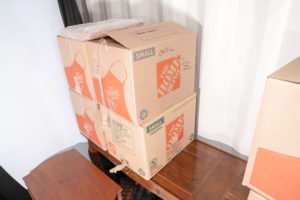 Everyone owns a few great pieces. Let’s say you want to sell one or two things. What is hot in the pandemic market? Here’s a list:
Everyone owns a few great pieces. Let’s say you want to sell one or two things. What is hot in the pandemic market? Here’s a list:
- Art and all prints (called multiples) valued under $10k that is NOT landscapes, NOT Victorian, NOT portraiture, and not dark in palette
- Anything mid-century modern is HOT
- Unique furniture from the modern era OR furniture that is linear and compliments geometric furniture
- Art glass, art pottery
- Clocks are not hot
- Bohemian objects are hot
- Some old electronics, such as an old Nintendo or an old stereo are hot
Where’s the best place to sell?
 Three auction houses will send a truck to Santa Barbara: Michaan’s in Oakland, Clars in Oakland, and Abell’s in LA. For mid-century modern call Los Angeles Modern Auctions, and or California objects call John Moran Auctions, and or California Arts & Crafts furniture and pottery call David Rago Auctions. Call me for suggestions to specific auction houses that deal in specific categories. Auctions are the way to sell today because all auctions ramped up their online platforms, now designed for bored collectors buying from the sofa. And auction commissions are around twenty percent, much lower than gallery consignment rates.
Three auction houses will send a truck to Santa Barbara: Michaan’s in Oakland, Clars in Oakland, and Abell’s in LA. For mid-century modern call Los Angeles Modern Auctions, and or California objects call John Moran Auctions, and or California Arts & Crafts furniture and pottery call David Rago Auctions. Call me for suggestions to specific auction houses that deal in specific categories. Auctions are the way to sell today because all auctions ramped up their online platforms, now designed for bored collectors buying from the sofa. And auction commissions are around twenty percent, much lower than gallery consignment rates.
My second topic when dealing with great stuff is to have these pieces insured separately from your homeowner’s insurance. Many of my clients ask me to write an appraisal for appreciable objects for RIDER coverage for a schedule of objects more valuable than the rest of the home’s contents. Let’s say you own $300k worth of personal property coverage as a “blanket” in your homeowner’s policy. And you have a $250k Chagall. That Chagall needs to be on a rider schedule. Many insurers don’t speak “art,” so I always recommend the rider policy be placed with a special company like Chubb, who DOES speak art.
Finally, THE UNKNOWNS
Everyone has stuff they find useful, decorative, interesting, but mundane. But among the mundane I often find a treasure. If you ever wondered about a meager object, take a photo, and ask me for its value. A fact: what my clients think valuable is usually NOT. Objects they suspect might possess value usually DO. Some examples include:
- Cast iron pots by Wagner
- 1930’s luggage stickers
- Old postcards of Santa Barbara
- California mid-century colorful outdoor planters
- Some old photography gear
- Some old tools
- 1960’s posters
- Ridiculous looking lamps
- Hand-made wax dolls
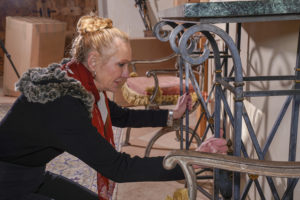 Teak furniture
Teak furniture- Lucite
- Hawaiian souvenirs, especially koa wooden bowls
- Glass negatives
- Tin and cast iron toys
- Children’s books in good condition
- Bohemian clothing, and hippie style furniture
- Some old typewriters
- Wrought iron garden furniture
- Print portfolio books, first editions
- Scholarly archives
Surprised? I often say I’m a shrink of the material world. At the shrink’s office, the most earth-shattering revelation is often the last sentence said. The LAST thing a client shows me is often the MOST valuable. I encourage you to think efficiently about your home and begin to prioritize what can’t be replaced. Make time now to curate what you enjoy, and what offers solace and a sense of completion when organized. Don’t listen to what anyone says, especially your grown children. Your home is now your own new world.
If you have the time, why not make a simple plan to shoot everything you love in your home, and create a quick archive? This will function for your heirs, as well as challenge you to regroup your insurance policy. It will help you decide what to hang onto in your home, now also your office, and what to sell in this rather surprisingly good market. You’ll feel in control: something very positive in the Pandemic which makes us all feel uncertain and out of control of life as we knew it.
This is super informative, thank you for this great article. Many great nuggets of advice, plus a key spotlight on how ‘value’ is fluid. What we love changes, as it should, in response to outside unpredictable forces – such a global pandemic! And congratulations on the realized dream of a mountain cabin!
Elizabeth, this is a wonderful piece. Thank you for sharing. Congrats on your new second home! Enjoy! Warm regards, Gloria Meldonian
Pingback: Restored Tandem a Piece of American Biking History - Elizabeth Appraisals